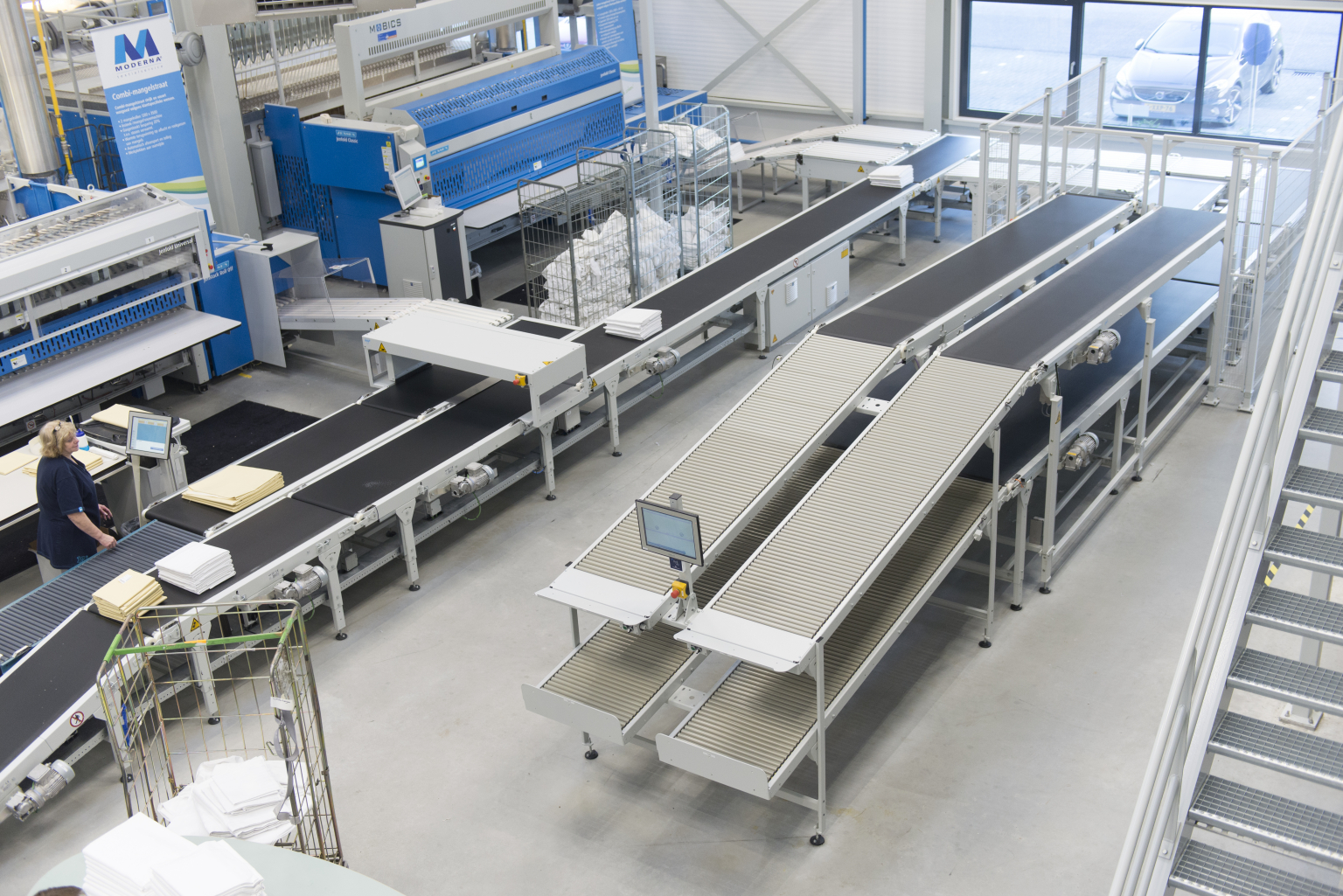WSP Systems wipes Excel Sheets off the table and reduces price calculation time by 75%
WSP Systems focuses fully on the internal logistics of industrial laundries. The highly productive industrial laundromats realized by WSP Systems for customers are designed as a well-thought-out system to ensure an impressive flow in the processes of full-service laundries. Cor Aalbers (R&D Manager at WSP Systems) explains the core of WSP systems: “We aim to maximize the performance of every existing or new machine within an integrated process throughout the entire industrial laundromat. We cover the process from advice to production. Additionally, our specialists serve as sparring partners in the search for the most efficient design for new - and for expanding - industrial laundry systems.”
By delivering complete systems for laundromats, consisting of various objects or products, WSP Systems had to think outside the boundaries of a product configurator and searched for a party that could align with this goal. At Elfsquad, it is part of the intake process to ensure successful implementation. When we see the possibility to develop generic functionalities with significant added value for all users, that makes us very excited. In the case of WSP Systems, this even perfectly aligned with our own development plans. In summary, WSP Systems is our launching customer in the field of system and product configurations. This cooperation has resulted in a significant reduction in price calculation time for WSP Systems, amounting to 75%.
The search for a system configurator
WSP Systems is unique in its service of supplying complete systems for laundromats. However, the delivery of a complete system also poses challenges. While manufacturers of single configurable products may already see millions of compositions, WSP creates multiple configurable products within one system, where everything depends on each other. “Our systems are quite diverse. Even a transport conveyor belt to move laundry through the system is produced with precision to the millimeter. Additionally, it requires curvature at different angles to fit optimally in the washery. Many other extra options are also available, such as whether they should have side bulkheads or not. Even the types of legs and colors can all be customized.”
To understand the number of possibilities of one part in the system clearly requires the help of a product configurator. For outsiders, the amount of options for one conveyor belt can already be mind-boggling. But WSP’s systems are even more complex, Aalbers tells us: “The conveyor belt has to fit perfectly with the next part, such as an elevator. Otherwise, you are not delivering a full system. Every possible component available in a system is interdependent. You’re talking about millions of possibilities. With that, try to get a price.”
Delivering a correct price indication is the biggest challenge WSP Systems faces, resulting in confusion for both internal and external parties. Not only does it require a lot of contact between Sales Inside Service and Account Managers, but it also involves the customer. This affects efficiency in the process. Moreover, working out the price indication is very time-consuming, as evidenced by the frequent use of Excel sheets.
The jumble of knowledge rules in Excel
"Our account managers focus on finding projects. Then Sales Inside needs to quickly manage a price calculation for the entire project," Aalbers explains. When calculating this price, Excel Sheets were previously used. And WSP, like others, encountered Excel’s well-known limits: "Fewer and fewer employees eventually knew how the Excel Sheets and calculations exactly worked anymore. It wasn’t future-proof at all. It also isn’t scalable, as it’s almost impossible to explain to newer employees. All very prone to error."
The knowledge present at WSP Systems is a clear USP. Account managers have profound knowledge about the most efficient design of industrial laundromats. Securing this knowledge is a must for WSP Systems. And eliminating unnecessary loss of time during price calculations has been the two prominent reasons to search for a configurator.

During the first sales conversations, we had the best feeling with Elfsquad. We did not have the idea that any other party, including both national and international competitors, knew exactly what we needed.
Cor Albers
R&D Manager at WSP
WSP Systems is our first customer to launch our system configurations!
At the request of WSP Systems, we developed the nested configurations & linked configurations functionalities in response to a clear lack of suppliers in the market. "During the first sales conversations, we had the best feeling with Elfsquad. We did not have the idea that any other party, competitors both national and international, knew exactly what we needed. During the Elfsquad demonstration, we were asked what exactly we were doing right now, and then this was quickly demonstrated in the configurator to show us the possibilities. This flexibility and openness appealed to us."
Functional decomposition at WSP Systems
A WSP system consists of different objects, such as a conveyor belt, elevator, or something else. All structures of the configuration models largely correspond, so WSP always uses the same set-up per product/object/project. Focusing on simple building, while the model is tested throughout concerning engineering logic. At WSP Systems, this is captured in the Elfsquad Configurator, which creates an ideal situation for Inside Sales: they can work with an engineering-validated sales model.
Every object in a project can now be configured, copied, and adjusted in Elfsquad. Eventually, one price rolls out for the entire system, including man-hours and travel costs.
But what are system configurations? And how do they work? Aalbers explains based on how it applies to their systems:
“There is one main configuration model: the WSP project. This configuration model consists of a tree of sorts (decision tree), containing every underlying nested configuration model. And all of these configuration models are interdependent. This is an evolution of the product configurator, which focuses on one complex product. But not on the coherence of numerous connected products, a system."
By building a system configurator with Elfsquad Configurator, the Excel Sheets have been put away, and WSP Systems has reduced price calculation time by 75%: “In comparison, we took an old project. We could now configure this entire project within 15 clicks. Previously, we would take another similar project, and Inside Sales would work with Excel Sheets to get to the new price of the project. On one hand, our product improvements were not properly taken into account, and on the other hand, errors from the previous project were so. This is not what you want at all in a project of this size and complexity.”
Back to the basics, and going forward with Elfsquad
WSP Systems returned to basics when designing Elfsquad. Aalbers explains, “We asked ourselves questions such as ‘What exactly do we supply?’ and ‘How can we dissect our product into standardized modules?’ By working in this manner, we were able to redefine our product so that all possible confusion would be eliminated in our sales and engineering processes. This ensures that everyone—customers, account managers, and engineering—speaks the same language.”
Taking this comprehensive approach, WSP Systems gains control over all the different possibilities within the systems: “When we acquire the project, our Sales Engineers go to work to fully capture the system in 3D. Within this, modules can be found, all corresponding with product lists in our ERP system.”
It becomes a win-win situation: customers are served perfectly by the account managers and Inside Sales, while engineering can get to work immediately without any confusion throughout the trajectory.
Share this case
More stories from our customers

Demaco Doubles Efficiency and Boosts Revenue with Elfsquad





